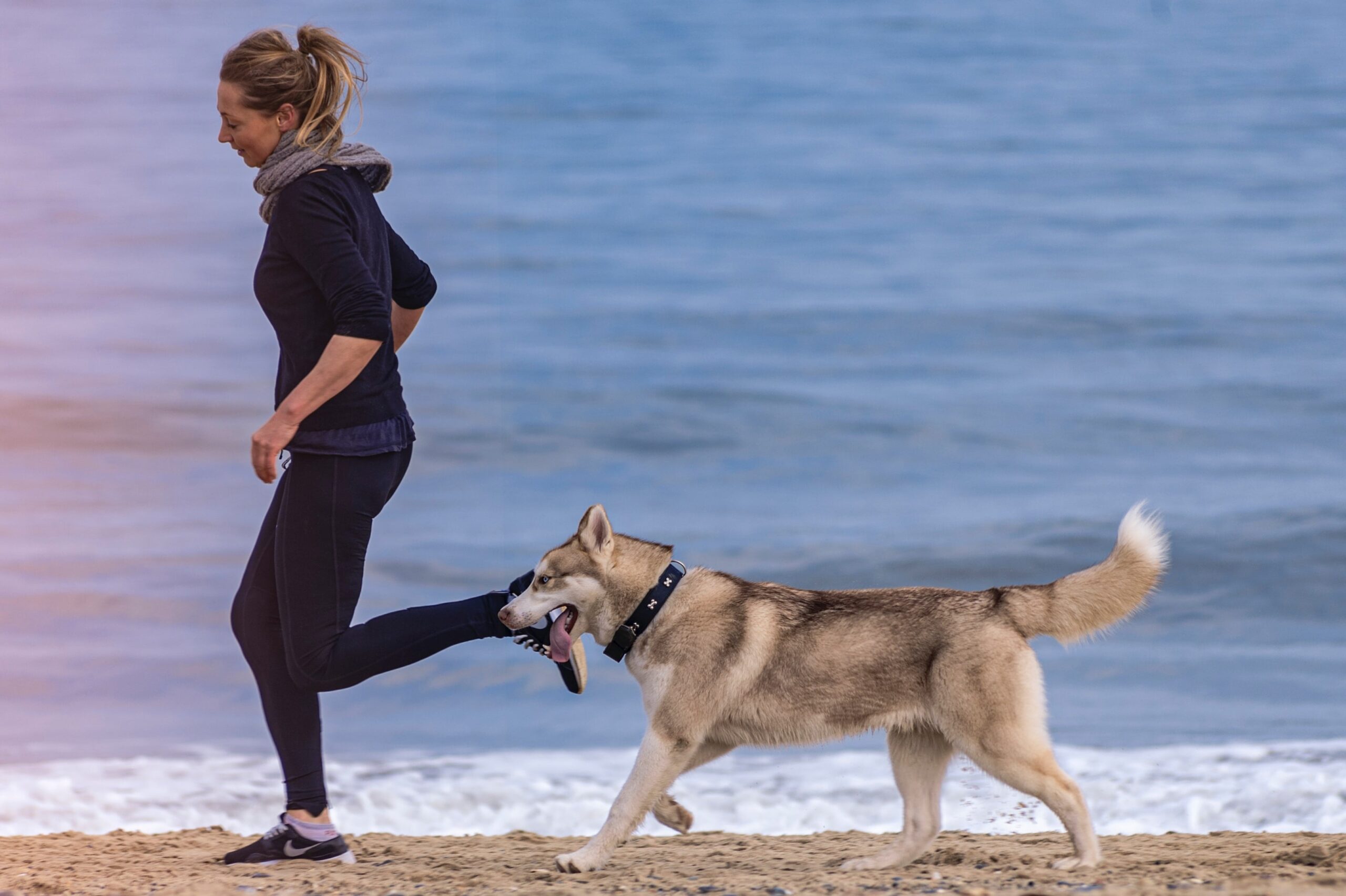
January is historically the month to set yourself some achievable goals for the year ahead. We’ve put together some ideas for creating New Year Resolutions for you and your pet!
Get fit
No more quick walks around the block after dinner. 2019 is all about getting fit with your pet. Both you and your pet will reap the rewards both physically and mentally. On an average 30 minute dog walk you can burn between 100 and 200 calories.
Try a new activity with your pet
From hiking to kayaking, hitting the waves to joining a pet exercise class, it’s easier than ever for people to incorporate their pet into a new pastime. These new activities will help you burn lots of calories! A 30 minute walk on the beach will burn approximately 150 calories and you could expect to burn 220 calories on a 30 minute hike.
Incorporate more playtime into your routine
Dogs love to play games and Cats love the thrill of chasing a toy; let’s just not tell them it’s exercise! Enjoy spending more time playing with your pets this year. A fun 20 minute tug of war would see you burn 50 calories.
Groom your pet every day
Brushing your pet helps to remove excess fur from their coat which reduces the amount you find on your clothes and furniture. It also helps distribute oils from the skin to the fur, to keep their coat healthy and shiny. Grooming an average sized dog burns 200 calories.
Teach an old dog a new trick
Studies show that mental stimulation can help reduce cognitive deterioration in older animals. By keeping your senior pet’s brain active, it can actually make it healthier.
Update your pet’s ID info
Over the course of a year, a lot can change — people move, get new phone numbers, and forget to update their pet’s tags. Don’t wait — update their tags and microchips now.
Make new friends
Visit your park and get to know other pet owners! It’s easier that you think!
Maintain a healthy diet
Lead a healthy life with a balanced diet and not too many treats.
Most of all; enjoy spending time with your wonderful pets!
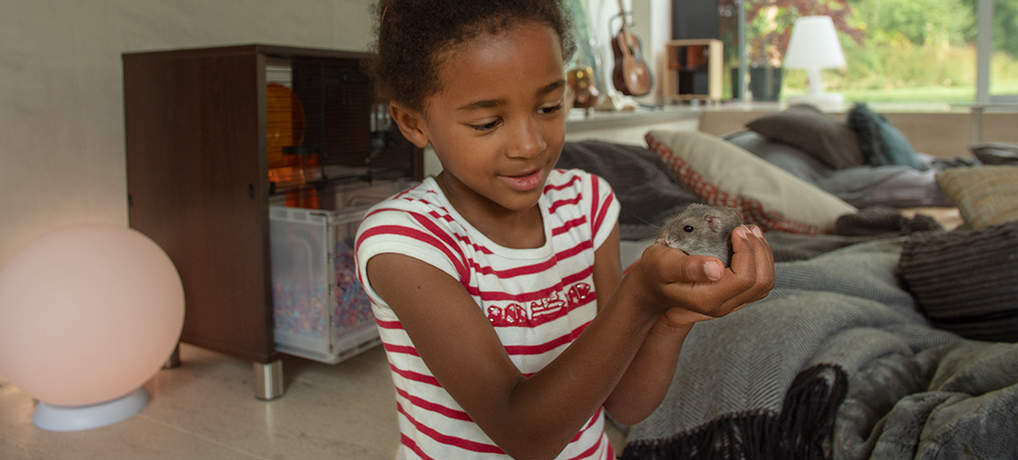
This entry was posted in Pets on January 10th, 2019 by helenkennedy
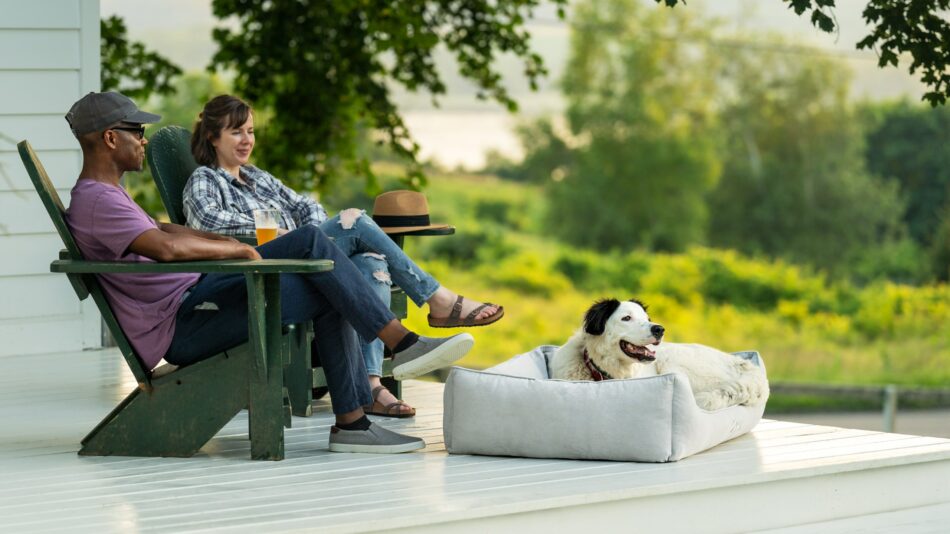
As any pet owner can tell you, animals have a wonderful way of weaving their way into our lives, bringing an abundance of joy, comfort, and a dash of adorable chaos. Owning a pet is more than just having furry, scaly, or feathered companions. Pets are the keepers of our secrets, the bringers of laughter, and the silent healers of our hearts. At Omlet, we think beyond the innovation of pet products and celebrate the remarkable bond that fosters people and pets. We recognise the benefits of owning a pet and know they are more than just a companion – they are an integral part of our lives, enriching them in countless ways.
Top 10 benefits of owning a pet
The decision to bring a pet into your life transcends companionship; it unlocks a myriad of benefits that enrich your physical, emotional, and mental well-being. From fostering responsibility to alleviating stress, the advantages of owning a pet are diverse and impactful.
Let’s delve into the top ten benefits of owning a pet:
1. Companionship and emotional support
The unwavering loyalty and unconditional love pets offer can alleviate feelings of loneliness and provide profound emotional support. Whether you are 2 or 92, pets offer comfort to our lives by giving us a sense of purpose and meaning.
Add fun products to your pet’s environment like a dome-shaped bird cage or a cat scratcher with lights and see how quickly your bond together strengthens. With wagging tails, furry coats or flocked feathers, pets become confidants, giving us comfort during difficult times, companionship through loneliness and a celebration of highs, making each day brighter.
2. Physical health improvement
Pet ownership often translates to increased physical activity. Whether it’s a dog needing walks or playing with an energetic cat, the regular exercise associated with pet care is tremendous. With increased exercise comes lower blood pressure, reduced risk of heart disease and a boost in overall fitness.
And don’t forget all the benefits your pet receives with movement as well as the increased bond they are getting with you. As a pet owner, you have your companion to thank for helping keep your health in check and happy.
3. Stress reduction
Have you ever had a stressful day only to come home, sit on the couch, start petting your dog and begin to feel more at ease? That’s because the mere presence of pets has been proven to reduce stress levels. There’s a reason pets are used as ‘calming mechanisms’ in hospitals, schools and nursing homes.
The simple act of petting a cat or dog triggers the release of oxytocin, or the “feel-good” hormone, in our brains which, in turn, promotes relaxation and decreases cortisol levels. And bonus – your dog or cat receives just as much happiness and satisfaction from being pet by you.
4. Enhanced social connections
Want more friends in your life? Get a pet. Pets serve as wonderful catalysts, easing social interactions among their owners. Whether it’s meeting fellow pet lovers at the park or engaging in conversations with neighbours during walks, pets act as the perfect icebreakers. Fostering new connections with pet owners is easy because they all have one thing in common – they love their pets like family.
5. Mental health benefits
The companionship of pets contributes significantly to mental health. They offer a sense of purpose, reduce symptoms of anxiety and depression, and provide a constant source of joy and entertainment, uplifting spirits during challenging times.
When feelings of depression or sadness abound, establishing new routines can be very beneficial in bringing about a general sense of well-being. With pets, routines are inevitable. Whether it’s the daily routine of walking your dog, scheduled feeding times or regular grooming schedules, having set plans for you and your pet makes mental health better.
6. Teaching responsibility
For families, owning a pet is an excellent way to teach children responsibility. Caring for a living being instil values within children like empathy, compassion, and accountability. By giving your child the responsibility of nurturing a pet, you will in turn be nurturing well-rounded individuals.
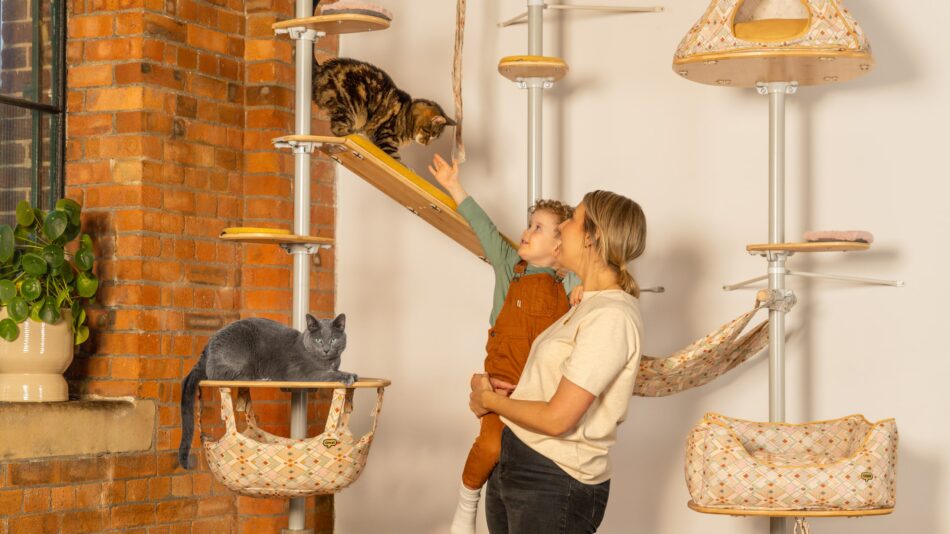
7. Improved immunity in children
While many people, and children, are allergic to certain animals, a lot of research has been conducted to suggest that early exposure to pets can actually bolster a child’s immune system. Pet hair and dander allergies are certainly real, however, the earlier a child is exposed to an animal, the greater the chance of reducing the risk of allergies and asthma.
In fact, growing up with pets introduces a variety of microbes to a child that they would not otherwise come in contact with and, as such, strengthens their immune system’s resilience. Always consult your doctor if medical conditions persist, but having a childhood pet is not just a memory maker, but an immunity booster as well.
8. Therapeutic benefits
The therapeutic benefits that pets offer to people are countless. From assisting in physical rehabilitation to providing comfort in emotional therapy, the presence of a pet can dramatically accelerate the healing process. While some pets are trained for specific service roles such as sight-seeing dogs, almost all pets can provide emotional support to their people just merely through their presence.
9. Sense of security
If you live alone or in a place where your sense of security feels weak, having a pet can make all the difference. Pets, especially dogs, offer a feeling of safety as they are another being in your house that can protect and provide reassurance. Dogs have keen senses and protective instincts, making owners feel safer and more secure with them around.
10. Unconditional love
There’s a quote by George Eliot that says, “Animals are such agreeable friends. They ask no questions; they pass no criticisms.” We would add that they are also one of the few beings that will love you more than you love yourself.
The joyous moments shared with pets leads to a profound sense of happiness and fulfilment. Through their antics, playful demeanour, and unwavering loyalty, pets offer us humans unconditional love and companionship that’s incredibly special and mutually beneficial.
Omlet and your pets
The relationship between pets and people extends far beyond the surface. Omlet acknowledges and cherishes this profound connection, recognising the multitude of ways in which pets enhance our lives. That’s why we make products like the Geo Bird Cage and the Switch Cat Scratcher to enhance the unbreakable bond that is between a person and pet. Owning a pet is an enriching experience that contributes to holistic well-being, companionship, and happiness in immeasurable ways and Omlet is proud to be a partner in the care of your pet.
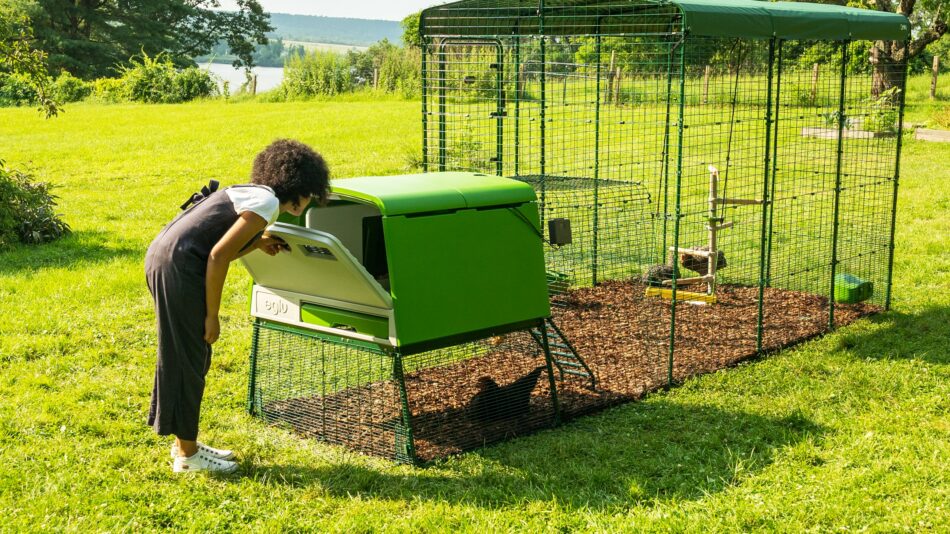
This entry was posted in Pets on January 10th, 2019 by helenkennedy

If you live anywhere subject to cold temperatures, chances are good that you’ll encounter a frozen chicken egg in the nesting box. Frozen eggs are less than ideal for numerous reasons – but they can be avoided. Here are some quick tips to show you how to prevent your eggs from freezing before you get to them.
Why do eggs freeze?
Eggs are mostly liquid inside until they’re cooked or are able to develop into a chick – and like other liquids, they have a freezing point. Chicken eggs freeze around 29℉, and can freeze solid in just a couple of hours. Since a non-broody hen doesn’t sit on the eggs for long, eggs laid in the nesting box are susceptible to the cold.
How can I tell if an egg is frozen?
Frozen eggs may feel more dense than usual, and may also crack, burst, or bulge from the internal pressure. Some eggs may not be completely frozen when they’re collected, and if you use them right away, you may see the partially frozen egg white. Partially frozen eggs may also feel off-balance in your hand, or make an audible sound when shaken.
Can I use frozen eggs?
Eggs that have frozen don’t have the same consistency or taste that you would normally expect from fresh eggs. Frozen eggs can be thawed and eaten, but due to their makeup, their texture will be grainy and unpleasant. Frozen yolks that have thawed will be thickened and gelatinous, losing their ability to be mixed well.
Any eggs that have cracked or appear misshapen from pressure should be thrown out – including those that have frozen. Once the shell of an egg has cracked, it exposes the egg to bacteria and other contaminants that can make you ill. It’s in your best interest to toss frozen eggs and focus on preventing them from freezing in the first place.
3 ways to prevent eggs from freezing
Insulate your coop
Insulated chicken coops help contain the body heat from your hens and keep it from dispersing too quickly. It also minimises the effects that the exterior temperature has on the interior, keeping the coop warmer than the ambient temperature. You can attempt to insulate your existing chicken coop – but be sure not to limit the ventilation, which is important during the winter months to prevent moisture buildup. Our line of Eglu Chicken Coops have twin-wall insulation with draft-free ventilation to keep the coop comfortable during the cold. Extreme temperature protection can also be added to further insulate our coops in especially cold climates.
Focus on the nest box
Make the nesting box as warm and inviting as possible. Thick bedding like straw is a good choice for winter nesting box comfort. You can also hang strips of thick fabric like fleece as a curtain in front of your hens’ nesting area to further insulate against the cold. Chicken nesting boxes should be elevated above the frozen ground, and warm enough to prevent the eggs from freezing until you’re able to collect them.
Collect eggs more frequently
During the winter months, it’s important to check for eggs several times a day to prevent them from freezing. While chicken eggs can stay in the coop for several days under normal circumstances and still be edible, frozen eggs should be avoided. Hens typically lay their eggs mid-late morning or in the early afternoon. It’s good practice to check the nesting box after your morning cup of coffee, after lunch, and at least one other time before dark.
What to avoid when preventing eggs from freezing
There are some insulating or heat-producing measures that may be tempting to take in order to prevent your eggs from freezing, but be sure to avoid:
- Placing a heat bulb or plate inside of the coop, as this will make your hens too hot and potentially cause them to go into shock when they venture out into the cold temperatures.
- Completely sealing up a chicken coop – this prevents air from circulating and will encourage moisture buildup on the coop and your hens, which can lead to respiratory illness and frostbite on their combs and wattles.
- Offering blankets or other cloth as nesting box bedding. Hens’ claws can easily become snagged in fabric and cause injury.
Omlet and your eggs
Our range of Eglu Chicken Coops all feature the same expertly designed insulating methods to keep your hens as comfortable as possible in all weather conditions. And, with the addition of an automatic chicken coop door, you can schedule your hens to stay in their coop during the coldest parts of the morning – adding heat to both the coop and their eggs. When you choose an ingeniously insulated Omlet chicken coop, you can have confidence that your chickens are comfortable when they roost, play, and lay their eggs.
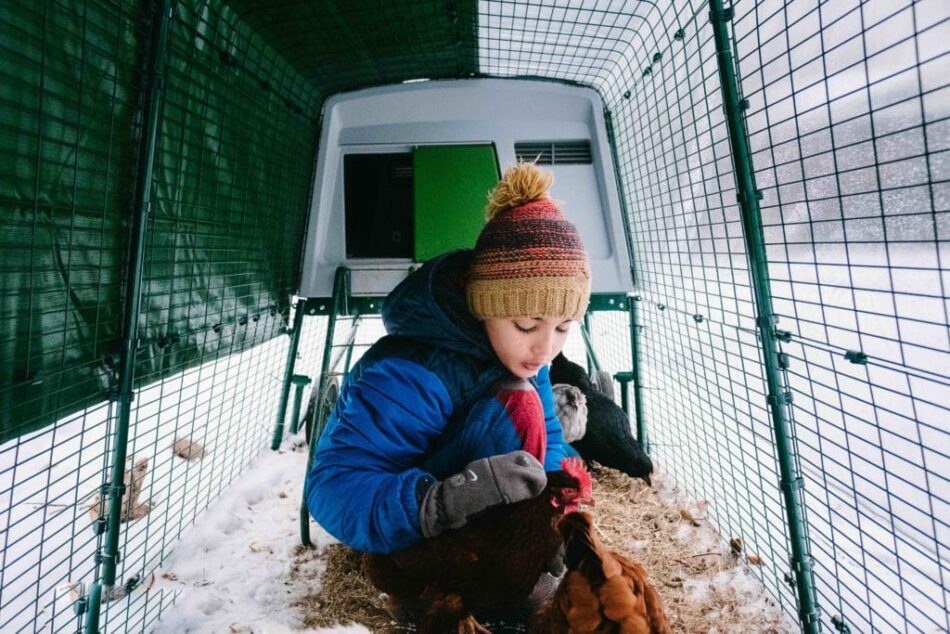
This entry was posted in Chickens on January 10th, 2019 by linnearask






